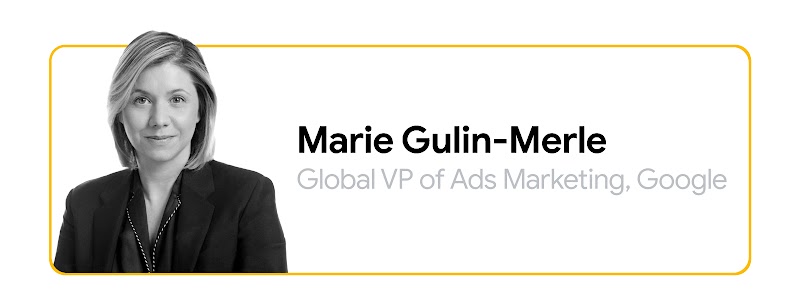The practice of marketing is being fundamentally transformed by two events: the rapid acceleration of AI and the phaseout of third-party cookies later this year. Together, these changes will remake the status quo of digital marketing — and redefine how we do our jobs.
This is a critical juncture. Like any inflection point, it will bring profound change, including the potential for new growth and opportunity. And leading marketers are seizing the moment.
While predicting the future with any certainty is impossible, sharing ideas and perspectives on what’s coming is one way to ensure we’re building a durable future for digital advertising, together. With that in mind, here are some key thoughts from Google leaders about how to chart your course during what is sure to be a remarkable year.
Marketing is essential to value creation

Budgets remain tight, and business leaders are ruthlessly prioritizing where to allocate resources. But marketing isn’t always their first choice: only half of CEOs consider it a top growth driver.1 So whether you’re a CMO or a practitioner, you’re facing tremendous pressure to drive business outcomes.
This is a challenging moment, to be sure. But it’s also an opportunity to prove and solidify marketing’s role as a profit center. AI is the enabler to help you do it.
AI is redefining the value of marketing. With it, we can build stronger connections with our customers, deliver better financial ROI, and make our jobs more interesting by freeing up time to focus on the high-value work that AI cannot do.
Where should you begin? My own team’s starting point is AI Essentials, a blueprint for actions you can take today to set your business up for success. And, to keep track of Google AI innovations and industry shifts all in one place, bookmark The AI Handbook for marketers.
First-party data is the foundation for a durable future

With Chrome’s third-party cookie deprecation imminent, getting privacy-forward marketing right is top of mind for everyone right now. But rising privacy expectations — and the implications for digital — are not new. So if you haven’t begun, now really is the time to rewrite your privacy playbook.
Consumers want relevant experiences from their favorite brands online, and they expect transparency and control over their data. Nearly 50% of North Americans say that a positive privacy experience with their second-choice brand would lead them to switch from their first-choice brand.2
That means that half of customers are up for grabs — not just your customers, but your competitors’ too. Winning and keeping those customers will require new relationships that are built, not bought, based on trust and a true value exchange. Direct customer relationships through a strong first-party data strategy makes this possible.
Companies that don’t forge these relationships with their customers and invest in first-party data risk losing ad functionality and effectiveness. By the end of 2024, it will be harder to reach your customers with digital ads, understand who took action on your ads, and measure how they interacted with those ads.
Media is everything, everywhere

When marketers think about media, we tend to think about ads, because they’re the portion we know the price of and pay for. Today, focusing on ad buys alone is too limited. There are countless other ways and surfaces where people can interact and engage with products. Marketers need to think expansively and consider the totality of these consumer interactions as media, and as an opportunity to see and engage, not just to achieve reach and frequency.
If every consumer moment, interaction, and surface is a marketing opportunity, how can your brand be useful, adaptive, and flexible in those spaces?
In Google’s Media Lab, we’ve made a commitment: We won’t present a stakeholder with any media plan that doesn’t have integrated paid, owned, and earned components. We talk about the whole thing together, the way users experience it.
When you build 360-degree media plans, AI becomes a key enabler — unlocking efficiency, productivity, creativity, and profitability.
Generative AI is a creative’s power tool

What makes AI unique is its singular ability to lift both the floor and the ceiling of creativity in marketing. It raises the floor by making it possible for anyone to use the most advanced technology available. You don’t have to know how to code or how to use a computer to experience AI. And it raises the ceiling by lifting creativity to levels we’ve never seen before.
For me and my team, generative AI is already an indispensable creative partner. It’s a quick and easy way to prototype and brainstorm ideas, and it’s a helpful antidote to a blank page. Struggling with writer’s or designer’s block? Share a few thoughts with Gemini, and suddenly you’re unstuck.
From a production standpoint, AI quite literally makes it possible for us to generate assets at the volume, velocity, and variation required to meet consumer expectations, and to do it at scale. We use AI tools to flip and trim video assets, create unique and tailored product imagery, incorporate text animations, and much more.
I offer the same advice to anyone, creative or not: Play with AI. It’s just like raw clay. AI can help you create almost anything you can imagine, but it needs creative people to play with it and shape it in order to reach its full potential.

